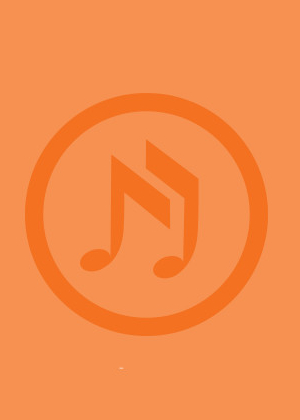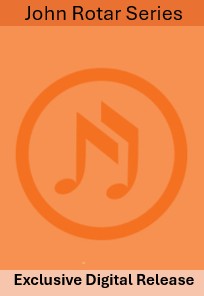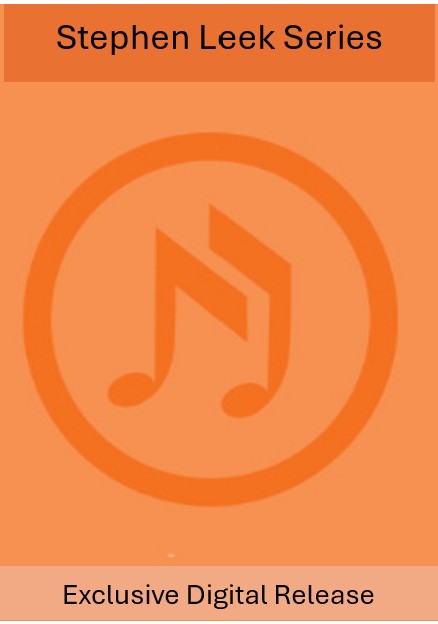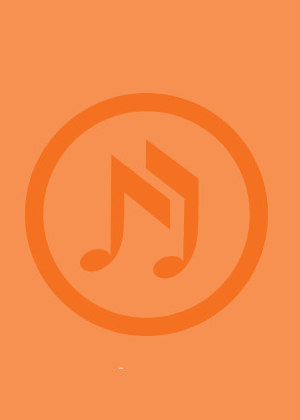| Title | Description | Composer | Voicing | |
|---|---|---|---|---|
 |
A Celtic Blessing |
New to Morton Music – digital copies are now available from RSCM Music Direct (UK) via the Other Countries link. The text, based on a traditional Celtic blessing, reminds us of the companionship of Christ and parallels our life’s journey with his. It is suitable as a doxology in church services, a blessing in Christian weddings, an act of dedication in baptisms and confirmations, a graduation blession or a moment of musical calm within a choral concert. This piece can provide comfort in times of personal stress and reassurance of the chosen journey through life. It ends with a beautiful and expressive setting of Amen, providing a moment of quietly confident affirmation. |
||
 |
A Festive Mass – Morton Music Exclusive |
New Release – One of John Rotar’s exclusive digital releases directly through Morton Music – email admin@mortonmusic.com for details. A Festive Mass is a sacred piece, suitable for low to intermediate choirs; duration is 10 mins. This piece was written in 2023 for All Saints Wickham Terrace and was performed numerous times as part of Mass at All Saints Wickham Terrace in 2023 and 2024. It was also performed by the Leichhardt Espresso Chorus in the Marrickville Town Hall, Sydney in June 2024. |
||
 |
A Gibber Plains Noel – Morton Music Exclusive |
New Release – One of Stephen Leek’s exclusive digital releases directly through Morton Music – email admin@mortonmusic.com for details. A Gibber Plains Noel was written in 1991 for my friends Monica Christian and the Alice Springs Junior Singers after spending a wonderfully enriching time together of workshops and rehearsals out in the Red Centre of Australia. The text by the Langford Family, who were on that journey, uniquely captures of the sun-drenched, parched landscape and the vivid wildlife – flashing, shimmering with explosions of colour in a celebration of Christmas in the outback.
|
||
 |
A New Gondwana (SSAA) – Morton Music Exclusive |
New Release – One of Stephen Leek’s exclusive digital releases directly through Morton Music – email admin@mortonmusic.com for details.
|
||
 |
A Red, Red Rose |
Graeme Morton’s A Red, Red Rose beautifully captures the romance of Scottish poet, Robert Burns’ text of the same title. Heart wrenching harmony and union of voice and strings evoke the poignancy of the text – And I will love thee still my dear, til all the seas gang dry. Til all the seas gang dry my dear, and the rocks melt with the sun; and I will love thee still my dear, while the sands o’ life shall run. A stunning piece for SATB voices with viola or violin and an excellent addition to your concert programme. Recording by the Brisbane Chamber Choir, directed by Graeme Morton. For your convenience, both the viola and violin parts are attached separately below, free of charge. |
||
 |
A Unison Mass – Morton Music Exclusive |
New Release – One of John Rotar’s exclusive digital releases directly through Morton Music – email admin@mortonmusic.com for details. A Unison Mass is a sacred piece, suitable for low level choirs and is arranged for unison voices and organ; duration is 7 mins. This piece was written for All Saints Wickham Terrace and performed as part of Masses at All Saints in 2024. |
||
 |
Adam Lay Ybounden |
New to Morton Music – digital copies are now available from RSCM Music Direct (UK) via the Other Countries link. Adam Lay Ybounden was written for The Lucian Singers and premiered at the Lessons and Carols service in 2011, with the composer as Director. The harmonic language pays homage to the ancient text, and the unison verses are chant-like before the bloom of the four-part refrains.’ |
||
 |
Advance Australia Fair (SSAB) – Morton Music Exclusive |
New Release – One of Stephen Leek’s exclusive digital releases directly through Morton Music – email admin@mortonmusic.com for details. Stephen Leek’s arrangement of Australia’s National Anthem – Advance Australia Fair is available for SSA and piano, SATB and SSAB a cappella choirs. |
||
 |
Agnus Dei (SATB) – Morton Music Exclusive |
New Release – One of Stephen Leek’s exclusive digital releases directly through Morton Music – email admin@mortonmusic.com for details. Agnus Dei is voiced for SATB a cappella and also SSA a cappella and can be paired with Leek’s “Sanctus” or sung as a stand-alone work. This setting is suitable for community and adult choir and pairs the traditional ideas of the Sanctus with more holistic ideas of the sentiments through texts by Australian write, Michael Doneman. The work draws on the traditional and contemporary notions of the Agnus Dei text. |
||
 |
Agnus Dei (SSAA) – Morton Music Exclusive |
New Release – One of Stephen Leek’s exclusive digital releases directly through Morton Music – email admin@mortonmusic.com for details. Agnus Dei is voiced for SATB a cappella and also SSA a cappella and can be paired with Leek’s “Sanctus” or sung as a stand-alone work. This setting is suitable for community and adult choir and pairs the traditional ideas of the Sanctus with more holistic ideas of the sentiments through texts by Australian write, Michael Doneman. The work draws on the traditional and contemporary notions of the Agnus Dei text. |
||
 |
And Loud We Sing And Long! |
New to Morton Music – digital copies are now available from RSCM Music Direct (UK) via the Other Countries link. This carol for Christmas manages to combine several opposing concepts. It mentions the traditional winter cold of Christmas and the summer heat which is part of the Australian Christmas experience. It also combines “scat” syllables in a style which is definitely Classical. This piece can be sung by any church or college ensemble which sings the standard repertoire of Christmas. Highly recommended!
|
||
 |
Andy’s Gone With Cattle |
Combines the traditional music and text of the Australian folk song Andy’s Gone With Cattle with the American folk song He’s Gone Away. Would suit a high school choir. |
||
 |
Animals Noah Forgot (Set 1) |
Recording of “Old Man Platypus” from ‘Animals Noah Forgot’ (Set 1) Recording of “Flying Squirrels” from ‘Animals Noah Forgot’ (Set 1) Six unison songs with piano using poems by Banjo Paterson. Sing in set 1 about The Mountains, Old Man Platypus, Flying Squirrels, and in set 2, Weary Will, White Cockatoos and Frogs in Chorus. These texts first appeared in 1931 in a collaboration between Banjo Paterson and artist Normal Lindsay (of Magic Pudding fame). Their book proposes that Australian animals are so different from animals elsewhere that perhaps they refused to go into the Ark with Noah in the great flood. Fun to sing – fun to listen to. The sound files are provided by Noel’s own choir, the Australian Boys Choir. The accompanist in the Animals is Charlie Sdraulig |
||
 |
Animals Noah Forgot (Set 2) |
Recording of “Weary Will” from ‘Animals Noah Forgot’ (Set 2) Six unison songs with piano using poems by Banjo Paterson. Sing in set 1 about The Mountains, Old Man Platypus, Flying Squirrels, and in set 2, Weary Will, White Cockatoos and Frogs in Chorus. These texts first appeared in 1931 in a collaboration between Banjo Paterson and artist Normal Lindsay (of Magic Pudding fame). Their book proposes that Australian animals are so different from animals elsewhere that perhaps they refused to go into the Ark with Noah in the great flood. Fun to sing – fun to listen to. Recordings of two of the pieces are provided by Noel’s own choir, the Australian Boys Choir. The accompanist in the Animals is Charlie Sdraulig. |
||
 |
ANZAC Ode – Morton Music Exclusive |
New Release – One of Stephen Leek’s exclusive digital releases directly through Morton Music – email admin@mortonmusic.com for details. ANZAC Ode is voices for SSAB and piano. This work was commissioned to be sung at the Australian ANZAC ceremonies to commemorate the historic Battle of Gallipoli in WWII and the strong alias between two nations. |
||
 |
Araluen |
Another Australian work with that characteristic “Orlovich sound” – fresh, buoyant, vital and energized, but without weight and drama. It is always clean on the palate. The sample recording is by the National Youth Choir of Australia. |
||
 |
Arise my love, my fair one |
New to Morton Music – digital copies are now available from RSCM Music Direct (UK) through the Other Countries link. “Arise my love, my fair one” was written in 2012 for the service at St John’s Cathedral, Brisbane commemorating the 20th anniversary of the ordination of women to the priesthood in the Anglican Church of Australia. Flowing lines rise gradually towards the “fragrance” to which the text refers later, the blooming and blossoming of spring and the heralding of a new dawn, for the ministry of women and men. The middle section exhorts in dramatic homophony which gradually calms to release “fragrance”, and then repeats the ideas of the opening. The piece dies away, as if lover and beloved were disappearing into a mist (or a cloud of incense!).
The above recording features St Peter’s Chorale (2013), directed by Kathryn Morton. Or click here to watch a recording from St John’s Cathedral, Brisbane (2013), directed by Graeme Morton.
|
||
 |
As Wave Drives Wave |
AS WAVE DRIVES WAVE for choir, opus 115 (2021) by Andrew Schultz is an unaccompanied setting of memorable lines from Ovid’s Metamorphoses which he in turn drew from Pythagoras’ The Eternal Flux. The motion of the waves and their restless renewal is used as a metaphor for the certainty of perpetual change in the universe. The imagery in Ovid’s text is very beautiful and possibly even a little melancholy – or maybe granitic and philosophical and hence, sadness is irrelevant. In this choral setting the text has been adapted and personalised by the composer. This six minute piece is based on slow-moving harmony with sequences of overlapping and interlocking chords – as if unresolved suspensions were waves pushing waves. The work is an eight-part SATB choir setting but a lot of the work is really in four parts with pairs of voices starting in unison and then splitting apart. As wave drives wave was commissioned by the Brisbane Chamber Choir and their Artistic Director, Graeme Morton, and was composed in late 2021. They perform the work here at Christ Church North Adelaide, South Australia as a part of the Adelaide Chamber Singers Festival in October 2023. The video was recorded by Australian Digital Concert Hall. TEXT Since I have embarked on endless sea and set my sails, I now do know this: As wave drives wave, And each, pursued, Pursues the next. For what was before is left behind; And what was not, now is; And each moment is new. So time, flies on and follows, Always, forever new, And is always new. For neither the river Nor this tide can Can stop their flow. I say: There is nothing In the whole universe, Nothing that persists. For that which once was is now gone. Text is adapted by the composer from Ovid, Metamorphoses, Bk XV:176-198, “Pythagoras’s Teachings: The Eternal Flux.” Recording from the Brisbane Chamber Choir at the Adelaide Chamber Choir Festival, October 2023, via The Australian Digital Concert Hall.
|
||
 |
Ave Maria |
New to Morton Music – digital copies are now available from RSCM Music Direct (UK) via the Other Countries link. Boughen’s two part sacred piece for treble voice and organ is a reflective arrangement of the classic text. Suitable for an advanced choir of young voices. |
||
 |
Ave Maria SATB |
New to Morton Music – digital copies are now available from RSCM Music Direct (UK) via the Other Countries link. A lyrical organ part introduces a simple soprano motive that opens into SATB passages rich with suspensions to add extra warmth to familiar, pastoral harmony. Imagine the feeling of motherly love that must have overwhelmed the virgin Mary when her cousin Elizabeth praised her! This Ave Maria was composed to evoke such feelings of love, gratitude, joy and glory. Let its self-saucing simplicity of means warm your soul and lift your heart – perfect for Advent, Christmas or a wedding.
|
||
 |
Beyond the Black Stump – Morton Music Exclusive |
New Release – One of Stephen Leek’s exclusive digital releases directly through Morton Music – email admin@mortonmusic.com for details. Beyond the Black Stump is a popular song for primary-aged choir with words written by the students of the Eltham East Primary School Choir. A fun piece that explores the challenges of the Australian outback. |
||
 |
Bird Songs – Morton Music Exclusive |
New Release – One of Stephen Leek’s exclusive digital releases directly through Morton Music – email admin@mortonmusic.com for details. Birds Songs, featuring Wild Black Crows, Night Birds and The Seagull are three short pieces for young voices and piano which capture the colours and quirky characters of the three birds. These pieces are ideal for upper primary level and offer challenges that will develop the choir and skills of the singers. |
||
 |
Black Children |
Suitable for elementary or high school use. The score is a blueprint which simply indicates basic material with which the choir can work. The choir and conductor are encouraged to make major decisions concerning their performance and the result is lots of fun! |
||
 |
Black Swan Song – Morton Music Exclusive |
New Release – One of Stephen Leek’s exclusive digital releases directly through Morton Music – email admin@mortonmusic.com for details. Black Swan Song is from a set of short fun pieces for young singers. Each of the works in the set introduces a small, yet achievable challenge for the singers. All the works are settings of Australian Nursery Rhymes by Australian wordsmith, Kel Richards. |
||
 |
Black Swana (SATB) |
From the Torres Strait Islands north of Australia’s Cape York comes a beautiful song which depicts the progress of the ship Black Swana as it glides across the sea. Recording from “Great Southern Spirits” by The Australian Voices, released in 1994. An arrangement in treble voicing is also available: Black Swana SSAA |
||
 |
Black Swana (SSAA) |
From the Torres Strait Islands north of Australia’s Cape York comes a beautiful song which depicts the progress of the ship Black Swana as it glides across the sea. An arrangement in SATB voicing is also available: Black Swana SATB Recording of SATB version of Black Swana from “Great Southern Spirits” by The Australian Voices, released in 1994. |
||
 |
Breakers |
“Dolphins” are the subject of this highly energetic and rhythmic piece. |
||
 |
Bullocky-O |
A rollicking piece for a good high school choir. Bullock teams were an important form of early transport for heavy loads in Australia and each one was driven by a “bullocky” – a pioneer of great character. Requires a skilled pianist. Recording from “Our Time And Place” by St Peter’s Chorale, directed by Graeme Morton, released in 1997. |
||
 |
Ceduna |
This is the fourth title of Songs of Passage, the work which includes Ngana. “Ceduna” means “waterhole”. The music includes “boxes” of material for singers to work through as well as traditionally scored sections. Commissioned by Graeme Morton’s St Peters Chorale. |
||
 |
Christ the Lord is Risen Again |
New to Morton Music – digital copies are now available from RSCM Music Direct (UK) via the Other Countries link. An energetic and exuberant paean on an Easter text by sixteenth century German writer, Michael Weisse. The music bowls along in changing meters from 4/4 to 7/8, 6/8 and 2/4. The choral parts are often in rhythmic unison or doubled by the keyboard, so the music is memorable and easy to sing by choirs of all abilities. There is a great balance between the asymmetry of the rhythm and the repetition of sections. The accompaniment lies “under the fingers” and is easily accessible to most church accompanists. This piece is suitable for any part of the Easter season, but particularly for Easter Sunday. Its dance like character also makes performance possible in choral programs outside religious services.This simple and vital anthem solves the problem of finding Easter music that is vibrant and energetic rather than grand and triumphant. If your choir likes John Rutter’s Easter music you may also like this piece, which makes references in the keyboard part to the well-loved hymn tune commonly sung to the same text. This recent work by Australian composer/choral conductor Graeme Morton is an energetic and highly rhythmic setting of this familiar Catherine Winkworth translation of a sixteenth-century German hymn text. The frequently changing meters from 4/4 to 7/8 to 6/8 add syncopation and rhythmic energy, a fitting complement to this joyful text. Erratum – In bar 57 the bass part should be 2 b-naturals followed by 2 b-flats, as in bars 27, 78, 106. Watch the full score preview video here!
|
||
 |
Come All Ye Fair And Tender Ladies |
An Australian interpretation of a traditional English folksong that is a good companion piece to Once I Had A Sweetheart. SA and piano. Demonstration Recording: |
||
 |
Come By The Hills |
The arrangement of a traditional song comes from Michael Tyack and George Torbay, and was commissioned by the New South Wales department of Education and Training. Arranged for SA and piano, it is a welcome addition to the repertoire for school or community performance. |
||
 |
Come Ye Makers of Song |
This piece owes much to Henry Purcell since it uses Ruth Watson Henderson’s lovely paraphrase of “Come Ye Sons of Art”. The music is simple (in 2 parts), with metre changes that always follow the flow of text and underpinned by constant eighth notes in the accompaniment. The piece is energetic and vibrant and makes an excellent start to a program or bracket for your choir. |
||
 |
Coonawrin (SATB) – Morton Music Exclusive |
New Release – One of Stephen Leek’s exclusive digital releases directly through Morton Music – email admin@mortonmusic.com for details. Coonawrin is for high-school aged and community choirs in SATB and TTBB voicings. This exciting and energetic work tells the traditional story of the creation of the iconic Glasshouse Mountains, along the Queensland coast.
|
||
 |
Coonawrin (TTBB) – Morton Music Exclusive |
New Release – One of Stephen Leek’s exclusive digital releases directly through Morton Music – email admin@mortonmusic.com for details. Coonawrin is for high-school aged and community choirs in SATB and TTBB voicings. This exciting and energetic work tells the traditional story of the creation of the iconic Glasshouse Mountains, along the Queensland coast. |
||
 |
Coraparena |
Also from Songs of Passage, “coraparena” means “flat place”. The writing is easy to sing though it contains some chord clusters. Commissioned by Graeme Morton’s St Peters Chorale. |
||
 |
Crossing The Bar |
New to Morton Music – digital copies are now available from RSCM Music Direct (UK) via the Other Countries link. An evocative setting of Tennyson’s text. Suitable for high school, community and church choirs.
|
||
 |
Dear Neighbour |
This delightfully cheeky piece takes its text from a note written by a friendly neighbour. Recording coming soon! |
||
 |
Do Not Stand At My Grave And Weep |
A lovely setting of this beloved text by Mary Frye, which speaks comfort as it were, beyond the grave. For unaccompanied SATB choir, Joe Twist wrote it for Graeme Morton and the National Youth Choir of Australia. Highly recommended. |
||
 |
Dreams of Never Never – Morton Music Exclusive |
New Release – One of Stephen Leek’s exclusive digital releases directly through Morton Music – email admin@mortonmusic.com for details. Dreams of Never Never is from a set of short fun pieces for young singers. Each of the works in the set introduces a small, yet achievable challenge for the singers. All the works are settings of Australian Nursery Rhymes by Australian wordsmith, Kel Richards. |